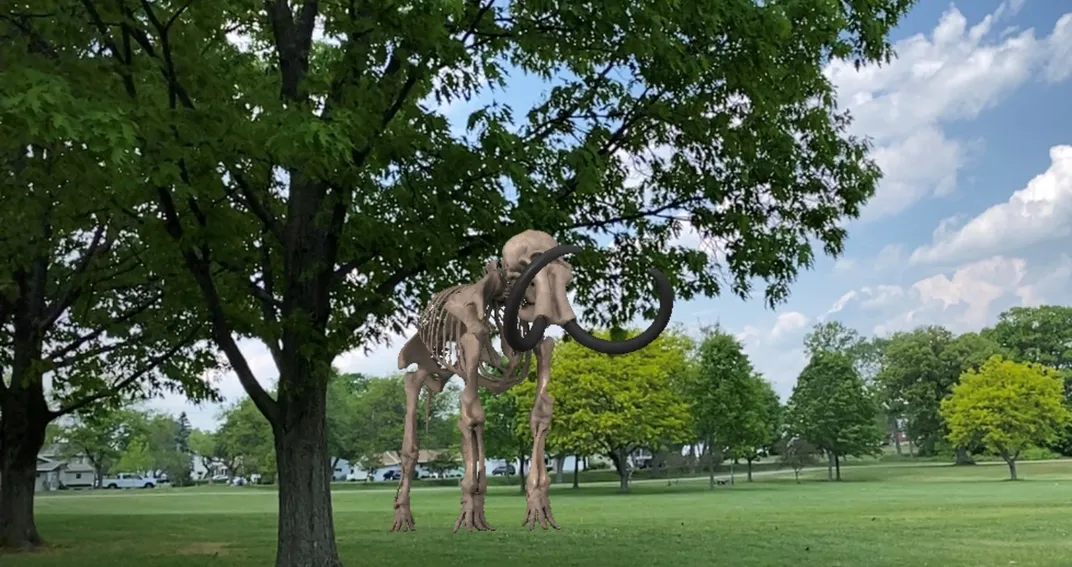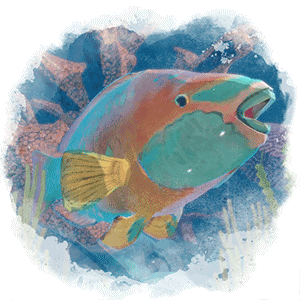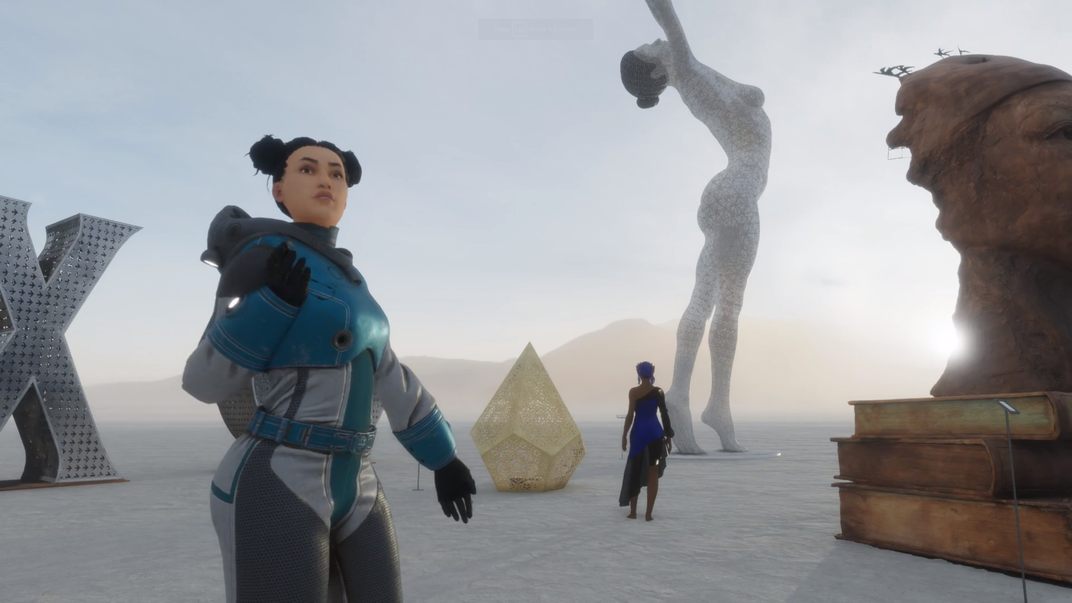When the Physical World Meets the Digital World, New Realities Emerge
AR/VR technologies give audiences new ways to experience museums that complement a traditional visit, engaging visitors and fueling learning opportunities
:focal(1120x435:1121x436)/https://tf-cmsv2-smithsonianmag-media.s3.amazonaws.com/blogging/featured/ARVR1.png)
Want to come face-to-face with a woolly mammoth? Visit Burning Man in the Black Rock Desert from the comfort of your couch? Interact with sea life that lives in a drop of ocean water? Now you can, thanks to virtual and augmented reality technologies.

But what are virtual and augmented reality technologies? Virtual Reality, often referred to as its acronym VR, creates entirely new and computer-generated worlds that you can explore with a headset. Augmented Reality, or AR, blends the real world with the virtual world, letting you bring virtual objects into your real world environment.
These new digital spaces aren’t a replacement for a physical museum. They both have benefits as well as limitations. Nothing can replace the experience of seeing the glimmer of Dorothy’s ruby slippers up close, or touching a rock brought back from the moon. But the digital realm is not limited by the dimensions of the museum walls, and instead delivers those experiences in new and exciting ways.
For example, you can place a virtual woolly mammoth from the Smithsonian’s National Museum of Natural History into your backyard, where you can walk up to it, around it, or under it. You can put yourself in the pilot’s seat of the Apollo 11 Command Module to get a sense of the cramped interior and complicated (and all analog!) instrument panel, and see messages the astronauts wrote on the interior walls of the spacecraft. Placing museum objects like these in AR/VR environments can be fun and exciting, and fuels curiosity and wonder.

Museum objects and video games aren’t usually in the same sentence, but by combining digitized objects, their research, and a dash of fun, they can turn the museum visitor into “player one.”
The Smithsonian Center for Learning and Digital Access did just this with their online game, “Secrets of the Sea,” a 3D exploration through a vibrant coral reef. Players take the perspective of a small fish, navigating through digitized 3D coral scans and uncovering the hidden life that makes its home there. The experience is based on the research of renowned marine biologist Nancy Knowlton, who narrates. Experiences like these allow learners to do things you can't typically do within the walls of a classroom or even a museum, ranging from traveling back in time to historic milestones to exploring the wonders of our vast universe.

The Smithsonian is a living museum, sharing knowledge that is constantly evolving. It is also a place of community. The conversations visitors have about what they encounter in our galleries are the heart of the museum experience.
Creating a shared virtual experience of an entire exhibition or gallery space within a museum can replicate the social aspect of visiting a museum with others, and allows individuals from varied geographic areas and time zones to interact in a shared virtual space. They can choose to move around the exhibit to look at individual objects, have a tour with an “expert” guide, or have conversations with each other, allowing for a broad exchange of ideas and fueling their curiosity to learn more.
It also broadens access for folks who can’t physically travel to a bricks-and-mortar museum for an in-person visit. For example, the 2018 exhibit “No Spectators: The Art of Burning Man” brought the famed Burning Man experience to the Smithsonian American Art Museum’s Renwick Gallery. In real-life, Burning Man grows from Nevada’s Black Rock Desert each summer as a temporary, participatory city of 70,000 people adorned with innovative art installations, some of which are burned in a culminating communal ritual. In the Renwick’s galleries, in-person visitors were awed by the array of unique artworks brought in from the desert – from the whimsical to the sublime. But if you couldn’t go to Burning Man or the Renwick Gallery, a virtual reality experience of "No Spectators" was the next best thing. Through a partnership with Intel, the Renwick exhibition was re-created on the social VR platform Sansar, enabling participants to create their own avatar and interact with a curator or docent for conversation within the virtual world. And, as an added bonus, some of the larger scale sculptures were depicted in a virtual desert-scape, allowing visitors to experience the awe and wonder of Burning Man without leaving home, or getting desert dust in their shoes.

Our strength as an institution is not only gathering objects together, but weaving them together to tell a story that brings greater meaning and understanding through research and contextualization. AR/VR technologies give audiences new ways to experience museum offerings that complement a traditional museum visit, engaging visitors in a sense of curiosity, surprise, fun, and shared exploration which foster and fuel learning. They let you defy the laws of physics, enter or play with objects, tour far off places, and participate in imaginary worlds. As these technologies mature, more creative uses will emerge, allowing museums to make compelling experiences for use in classrooms, communities and homes. The possibilities are limited only by our imaginations.


